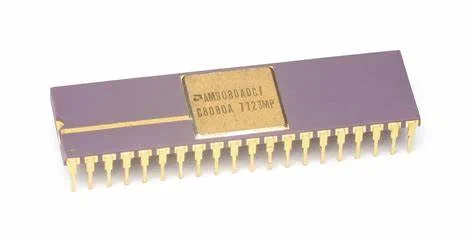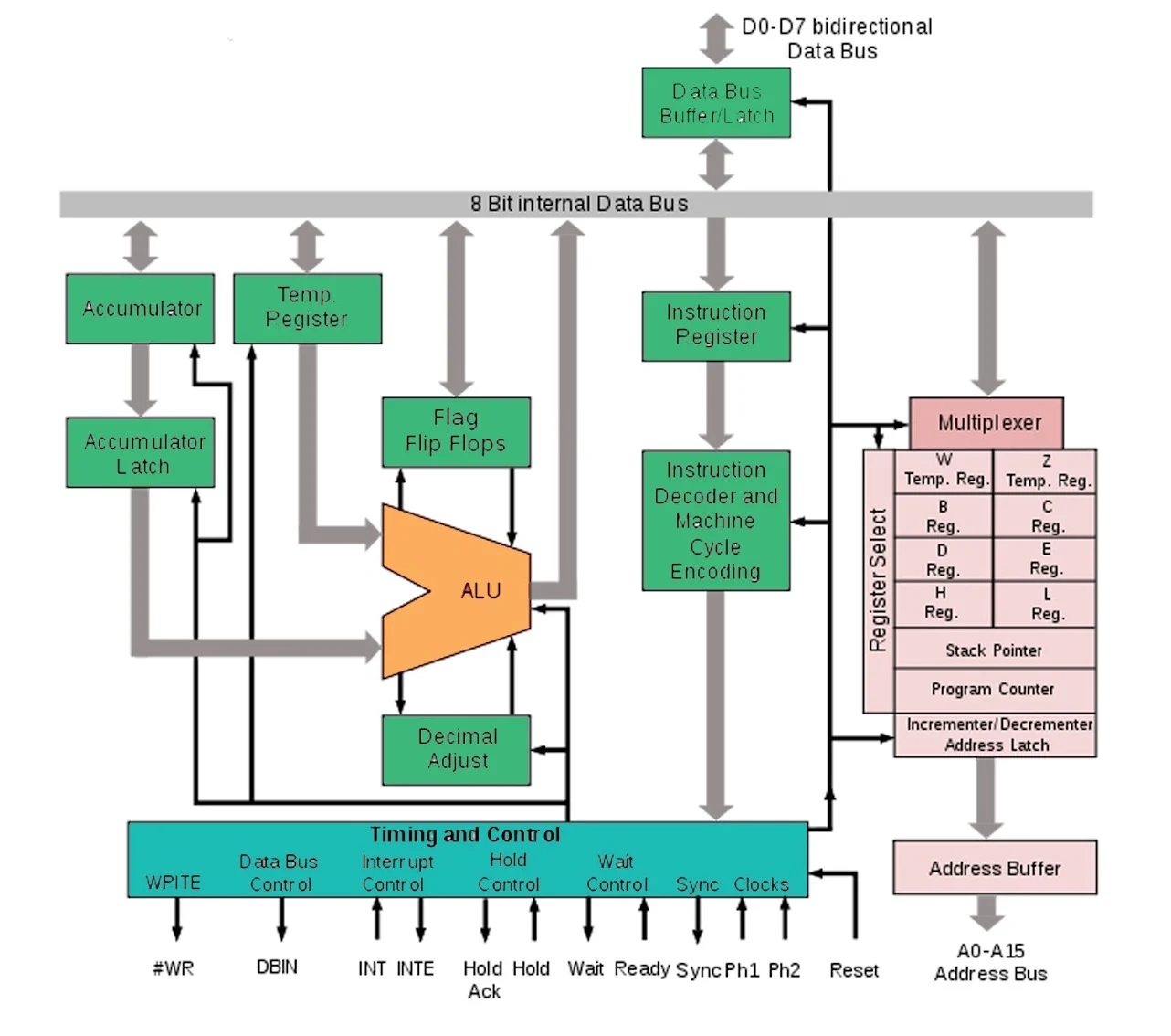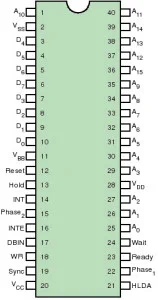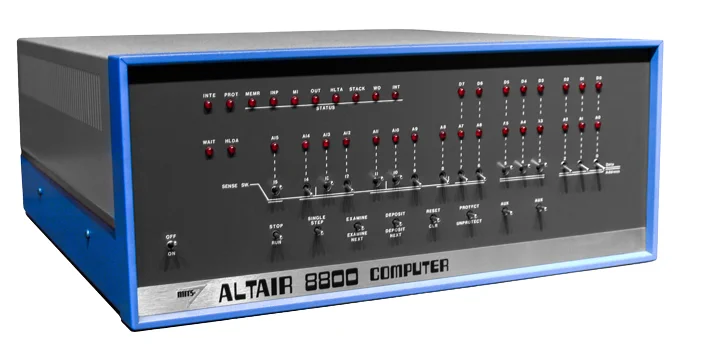Intel Altair 8800
The Altair 8800 was built around the Intel 8080 CPU. The 8080 was the second 8-bit microprocessor that Intel manufactured in 1974. The CPU has a small instruction set and is easy to understand.
The Altair 8800 was programmed by setting switches on the front panel. This was a very labor intensive and error-prone process. There was a series of LEDs that let you know the state of the Altair.
Programs could alternatively been loaded from and saved to a paper tape reader that was connected to the Altair. Later, as the Altair became more popular and the community around it grew, other peripherals like a keyboard, a monitor and disk drives would be available.
The Intel 8080 CPU
The Intel 8080 was an 8-bit microprocessor that was designed and manufactured by Intel Corporation. It was the first CPU in the x80 series, and was released in April 1974. The 8080 had a clock speed of 2 MHz and was capable of addressing 64 KB of memory. It had a total of 45 instructions and 7 registers, including the Accumulator, the Flags register and the stack pointer.
One of the key features of the 8080 was its ability to directly execute instructions for input/output operations, allowing for more efficient communication with peripheral devices such as keyboard, display, and storage. This made the 8080 a popular choice for early personal computers like the Altair 8800, the IMSAI 8080 and the first IBM PC.
Additionally, the 8080's architecture was widely adopted in industrial control systems and arcade games. It was also used as the basis for other microprocessors such as the Zilog Z80 which was widely used in home computers of the 1980s.
The 8080 was succeeded by the 8085 microprocessor in 1976, which was similar to the 8080 but had an additional instruction set and an integrated clock generator. The 8080 and the 8085 together with their variants and clones played an important role in the development of the microcomputer industry and the personal computer revolution.





